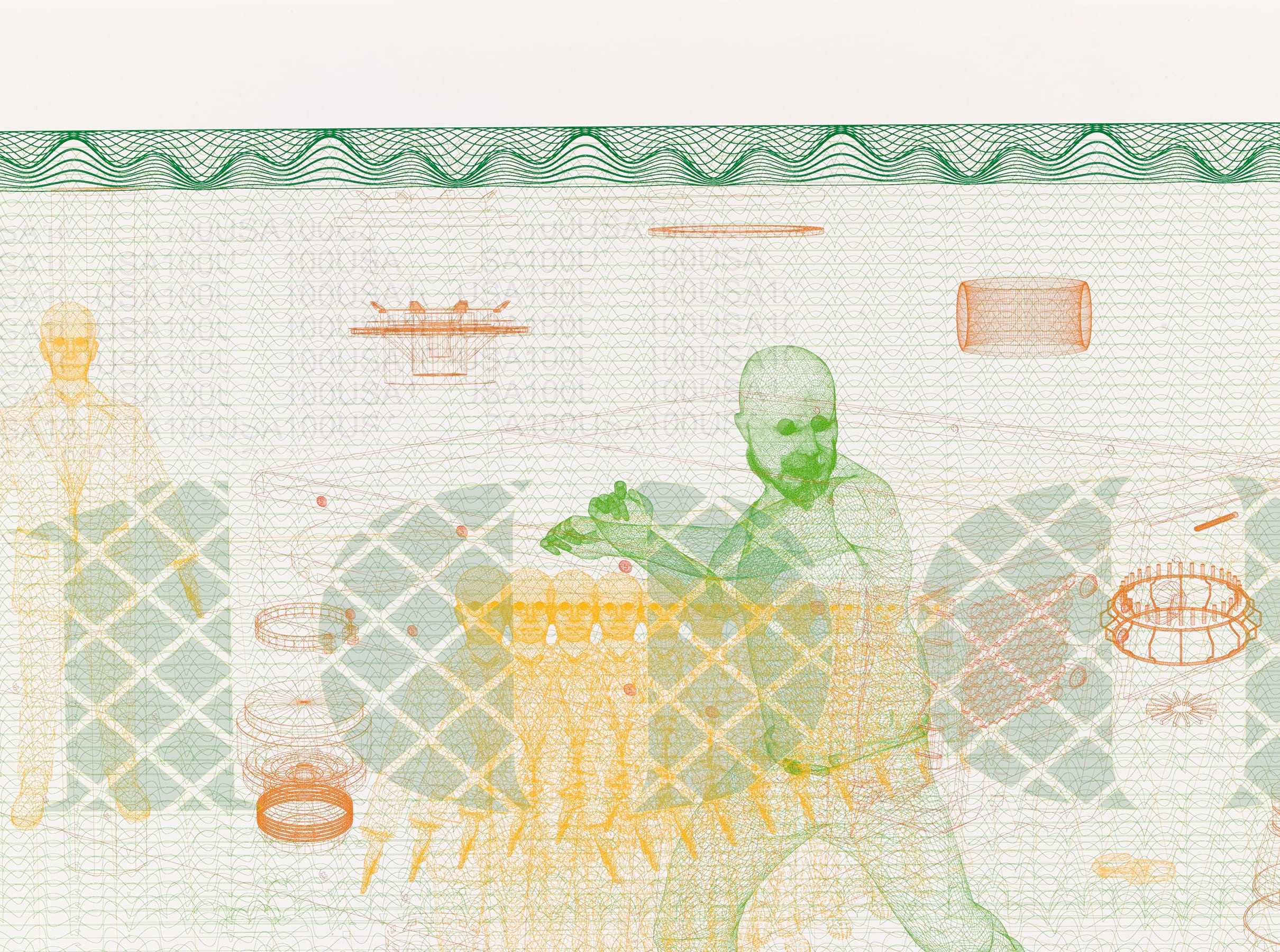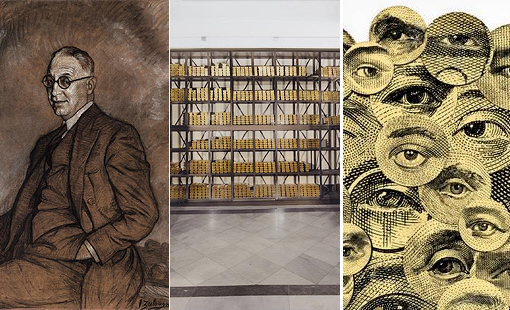
Our 'Highlights' section now features three works from the collection on show in our Open Doors tours
The Collection section of our website regularly features a selection of some of the 4,500 artworks in the Banco de España collection, from diverse periods in very different styles and formats. For our latest update, we have chosen three works — Ignacio Zuloaga's portrait of Governor Alejandro Fernández de Araoz, Carlos Aires's sculpture Reflections in a Golden Eye and Cristina Lucas's The Treasure Vault. Perspective I. All three are on show in the bank's recently-inaugurated Open Doors tours of the Banco de España building on Plaza Cibeles. The visits provide a chance to view not only some of the most significant rooms, but also an important selection from the bank's large collection of artworks.
The first work is representative of the portraiture cultivated by Ignacio Zuloaga y Zabaleta, a major figure in Spanish art in the first half of the twentieth century. The sitter, Alejandro Fernández de Araoz, served as governor of the Banco de España in 1935 and later as a board member. He is shown here with a calm, slightly ironic look, posing beside some books against the backdrop of a stormy sky and indistinct landscape. By placing the figure in this uncluttered setting, with the forested land only barely visible in the bottom right-hand corner, and by surrounding the head with storm clouds, Zuloaga endows the portrait with the cosmic touch that was typical of his own particular brand of expressionism, without sacrificing any of the natural representation required. This artistic language was especially significant within the context of the Regenerationist movement to which Zuloaga was closely linked. His use of dry charcoal and chalk in no way detracts from the expressive capacity of the picture, which stands halfway between drawing and painting, marking it out from other portraits in the bank's gallery.
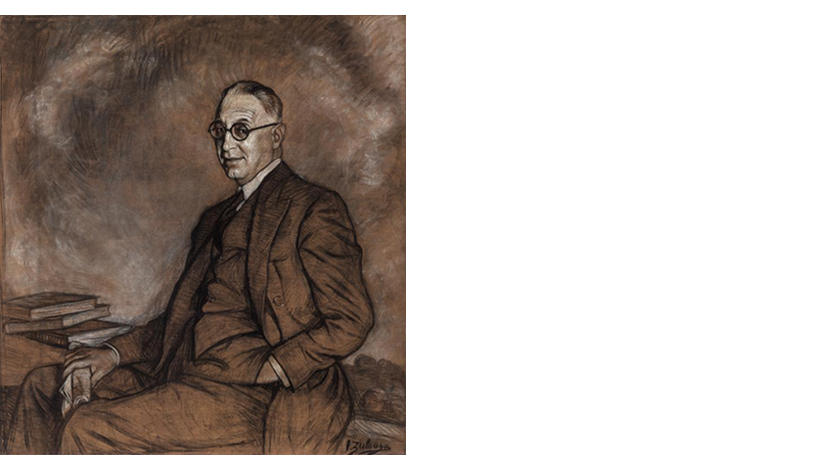 Ignacio Zuloaga: Portrait of Alejandro Fernández de Araoz (1936)
Ignacio Zuloaga: Portrait of Alejandro Fernández de Araoz (1936)
The portrait of Fernández de Araoz is not the only piece by Zuloaga in the collection. There is also a gouache from 1900 of a large house in Biarritz, similar to that occupied by the artist in Zumaia on his return to Spain after World War I and which he turned into a museum with works by El Greco and Goya, among others. We also have a portrait he painted in 1909 of his cousin Juan de Azurmendi Zabaleta, which is an excellent example of the more 'cosmopolitan' and 'refined' side of Zuloaga's painting, far from the expressionist dramatism of his best-known pieces. Recent critical and historiographical analyses of this artist have turned the spotlight on this aspect of his work.
The second piece featured here is a sculpture by Carlos Aires entitled Reflections in a Golden Eye (2018), a reference to John Huston's 1967 film of the same name. Viewers standing in front of the piece find themselves being observed by dozens of eyes, while at the same time they see their own reflections in the gold-tinted steel. The eyes, taken from (mostly male) faces depicted on real banknotes, are printed on stainless steel plates, giving the sculpture a certain air of a Baroque altarpiece, in which the object of worship is no longer the Christian God but the ultimate divinity of capitalist societies — money.
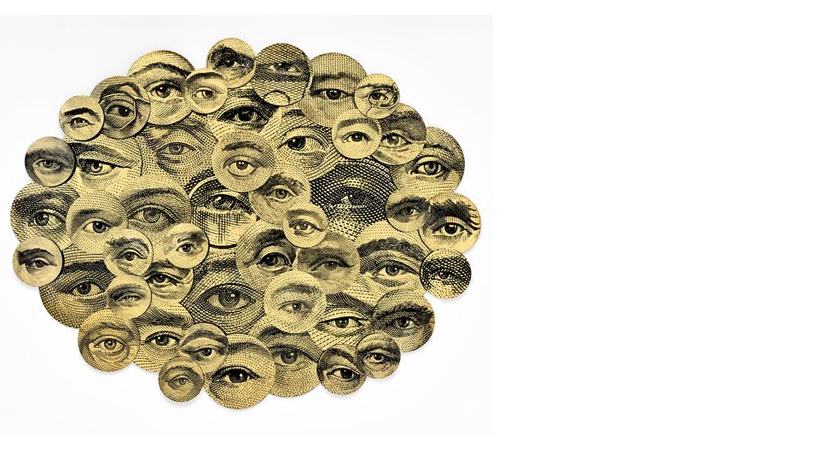 Carlos Aires: Reflections in a Golden Eye (2018)
Carlos Aires: Reflections in a Golden Eye (2018)
Depictions of eyes have always carried deep symbolic connotation. They were used in Ancient Egypt, and Christianity has used them as a symbol of God's vigilance and providence. They are very commonly used on banknotes, featuring, for example, on the reverse side of US dollar bills. The image of the eye is also linked to the mythological figure of Argos, who is referenced in a number of ornamental features on the uniforms worn by some eminent figures from the Banco de España in their portraits, including Francisco de Cabarrús and Ramón de Santillán.
The third and last work selected for the 'Highlights' section is Cristina Lucas’s The Treasure Vault (2014), a photographic series featuring one of the most famous areas in the Banco de España: the vault, located 35 meters underground, which houses a large portion of the Spanish State's gold reserves. Built when the Cibeles building was being enlarged under the guidance of architect José Yárnoz Larrosa, the vault houses not only bullion, but also a large number of gold coins, which are neatly arranged in glass-fronted shelves designed by Eiffel.
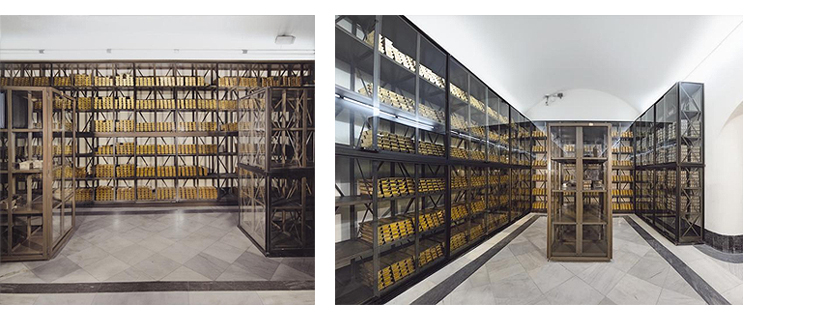 Cristina Lucas: The Treasure Vault. Perspective I and The Treasure Vault. Perspective II (2014)
Cristina Lucas: The Treasure Vault. Perspective I and The Treasure Vault. Perspective II (2014)
The two pictures in the series —The Treasure Vault. Perspective I and The Treasure Vault. Perspective II— are the first artistic photographs of the location. They also marked the starting point for a project that Cristina Lucas went on to develop during the second half of the last decade in several gold vaults around the world. Netherlands Gold (2016), a series of six images of the gold vault of the Dutch National Bank or Nederlandsche Bank, one of the works linked to this project, is also part of the Banco de España Collection.
